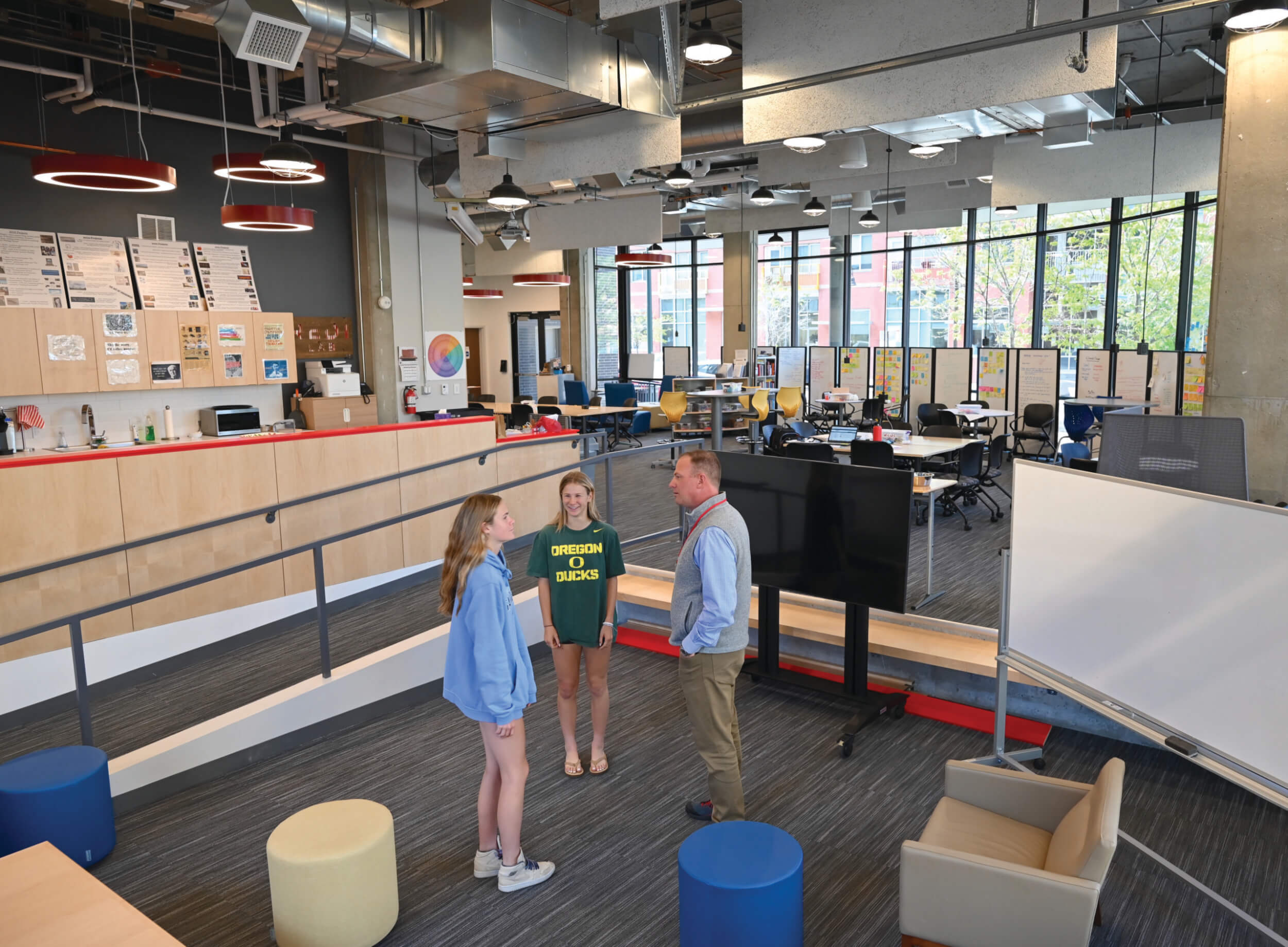“REDI Lab is just the beginning of a lifetime subscription to learning,” said Tom Thorpe, the Director of Colorado Academy’s REDI Lab program, as he spoke on March 3, 2023, to parents, faculty and staff members, and friends gathered to celebrate the opening of the REDI Lab Aimee and Jonathan Coleman Center in the Mariposa District of Denver.
And that new space, Thorpe continued, is the beginning of the next evolution of CA’s signature program, opening up its mission to the wider world, where the innovative thinking and creativity that have been the hallmarks of REDI Lab since its inception in 2017 might flourish through authentic connection with community. A prestigious $100,000 matching grant from The Edward E. Ford Foundation, announced just a few weeks after the Coleman Center’s opening, will support that aim, enabling programming for CA and the greater Denver community, while establishing the space and program as a nexus for innovative education.
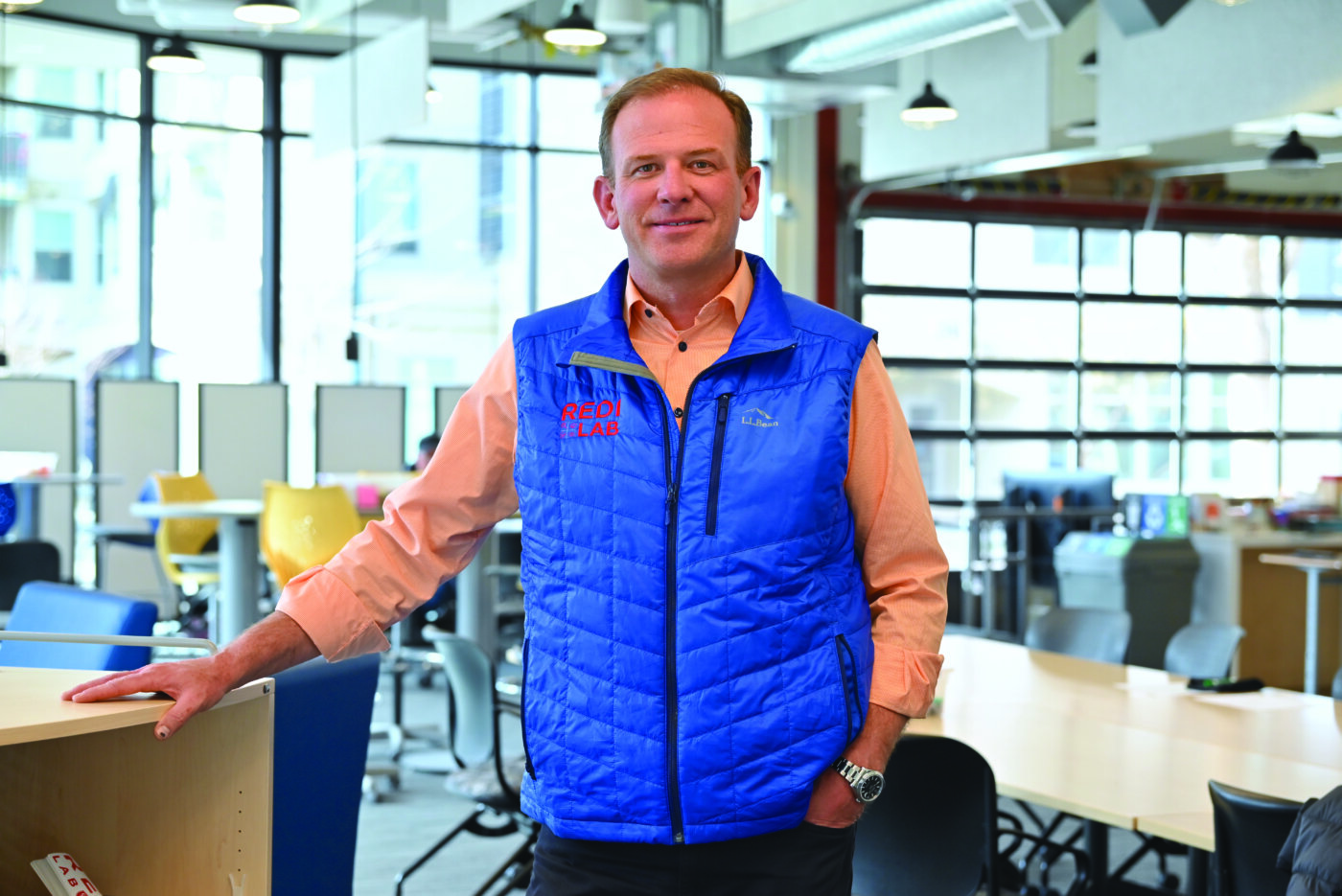
A one-trimester “school-within-a-school” experience for high school juniors and seniors, REDI Lab (REDI stands for Research, Entrepreneurship, Design, and Inquiry) inspires creativity, ingenuity, and success through highly personalized projects. It gives students the space and time to explore what they’re curious about, using principles and concepts taken from industry and business to reflect on their learning and practice skills necessary for success in a changing world.
“REDI Lab’s goal,” Thorpe said at the opening celebration, “is to build value by elevating students’ passions and interests and providing a platform for sharing their ideas. The Coleman Center mirrors that ambition.”
Once housed in a borrowed classroom in CA’s Ponzio Arts Center, REDI Lab now flows through three interconnected spaces designed with great intention. In a large open area, students can collaborate around a long conference table or use extensive whiteboard walls to brainstorm and build community. In another space equipped with movable desks and whiteboards and comfortable furniture, students do research, hold interviews with subject-matter experts, and further develop their ideas in small groups or on their own. Finally, in an amphitheater-like zone with tiered seating and a massive display, they refine their “pitches,” in which they share their vision and receive feedback from peers. Wraparound windows provide a view from any part of the space onto the neighborhood’s bustling streets.
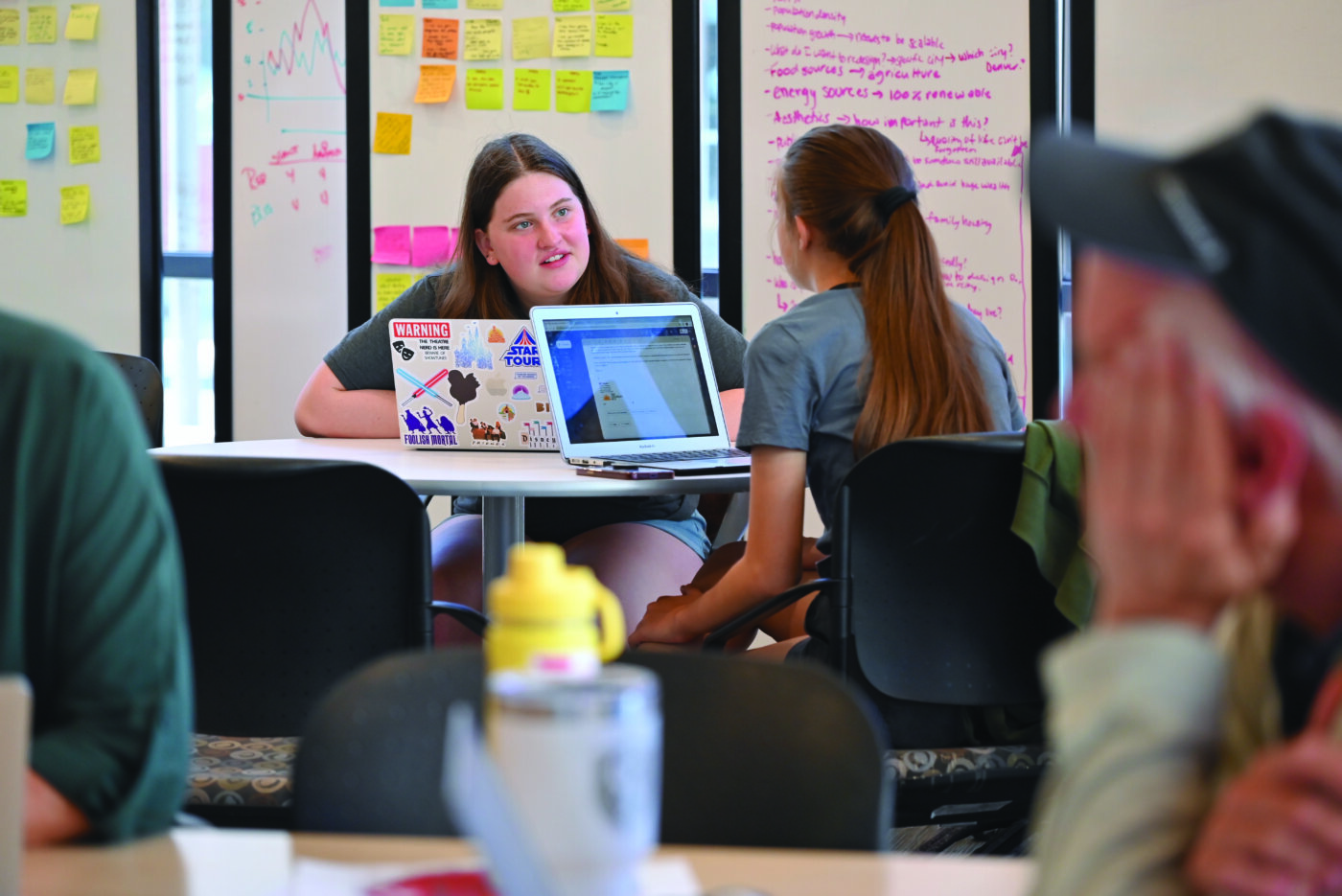
Fittingly, the Coleman Center sits at the intersection of innovation, creativity, and equitable growth and development that are reshaping Denver’s urban landscape. Named for a lead gift from CA parents Aimee and Jonathan Coleman, the new facility is the result of a partnership between CA and the Denver Housing Authority (DHA), whose redevelopment of the Mariposa District aims to bring together affordable housing, nonprofits, community groups, entrepreneurs, and the arts to support a vibrant, sustainable, transit-oriented community.
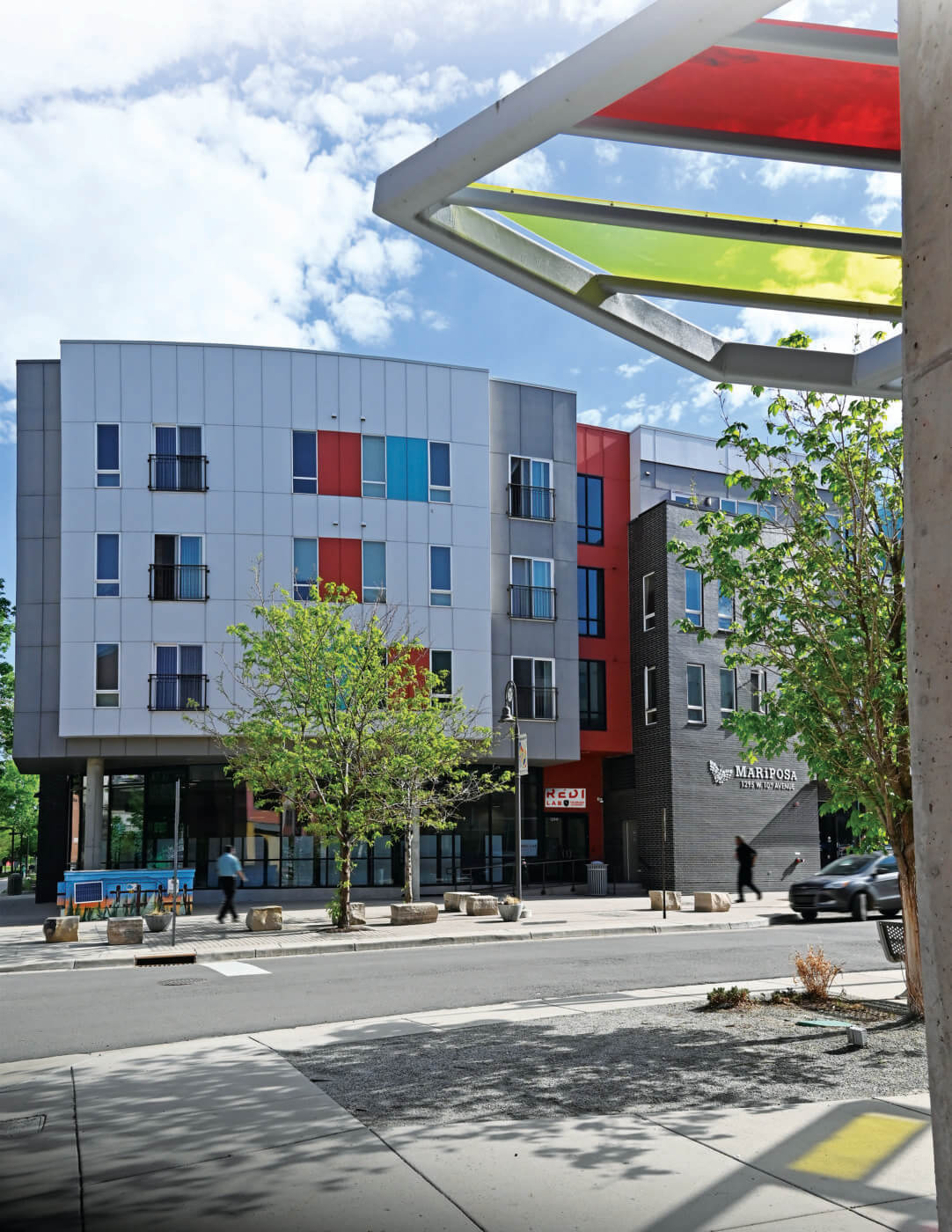
Situated steps from the 10th & Osage RTD Light Rail Station, the Coleman Center anchors the ground floor of DHA’s Mariposa property, which also houses 87 LEED-certified affordable housing units. Celebrating the ribbon cutting that marked the official opening of the space, Jonathan Coleman said, “We are incredibly fortunate to be part of the CA community and benefit from the REDI Lab program, but relatively few people in Denver have that opportunity. We have an obligation to expand the scope of what we are capable of and serve a much larger group of people.”
Head of School Dr. Mike Davis noted that since its inception, 150 CA and non-CA students have gone through the REDI Lab program—including a summer academy which debuted in 2021—and more than 100 teachers from the Denver Metro Area have taken advantage of professional development offered by UnlimitED, an outgrowth of REDI Lab that inspires innovation in education. “The new off-campus space allows REDI Lab students to take their ideas even further, and it will enable CA to make an even greater impact in the Denver area,” Davis said. Plans call for expanded professional development offerings for teachers, new college- and career-focused summer programs, and partnerships with community organizations. Financial aid will help more Denver residents take advantage of these opportunities than ever before.
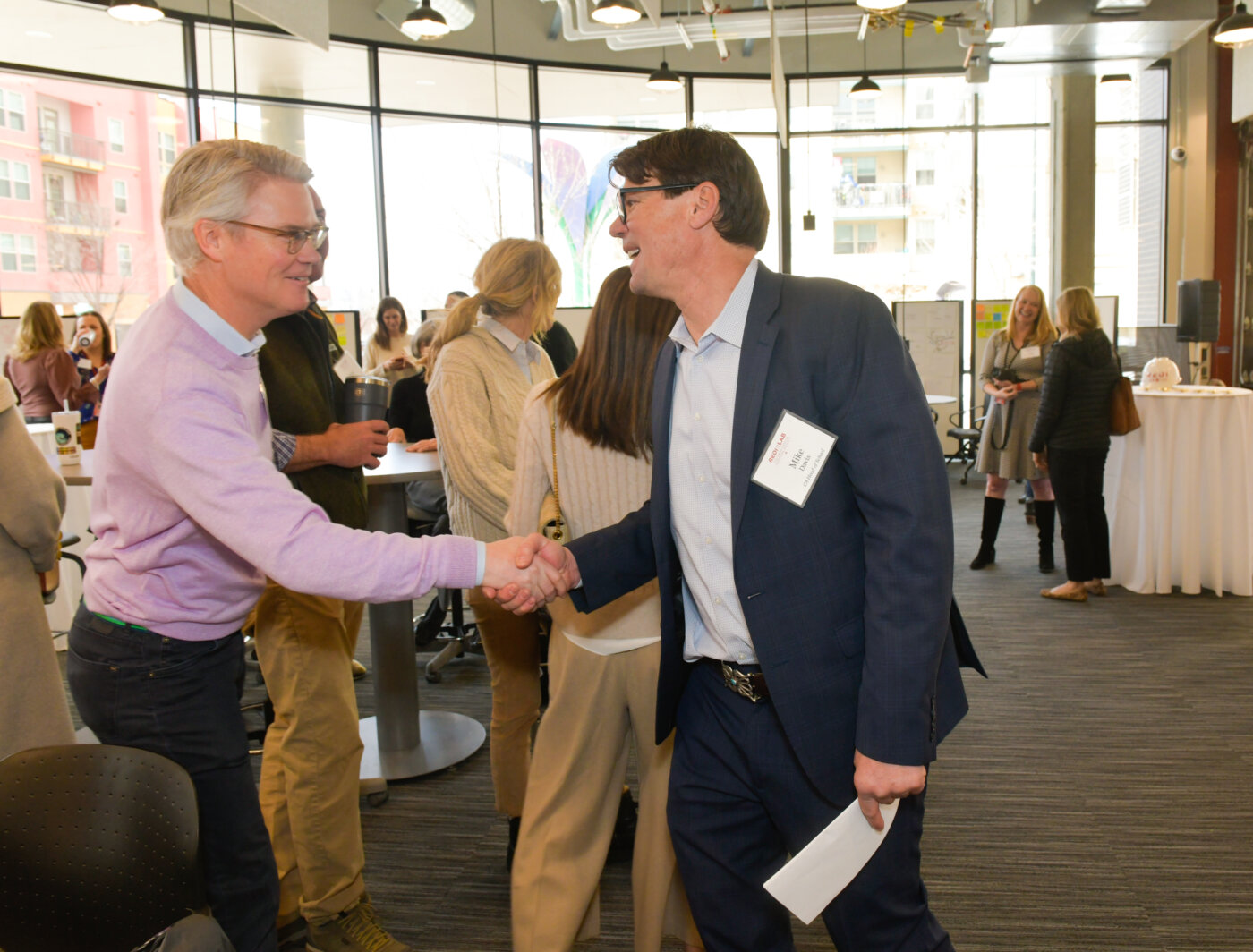
“As the parent of a REDI Lab student, I’ve seen the dramatic impact this program can make,” Davis continued. “The kinds of questions and real-world problems students take on through REDI Lab are just inspiring; they grapple with everything from social justice to the future of technology and how we connect with each other as human beings. Stepping back from focusing on teaching content and letting students drive the process as they think about the world—it gives me a lot of hope that our graduates will go on to conquer the really tough challenges we’re facing today.”
REDI Lab, said Thorpe, celebrates students’ capacity for thinking and dreaming. “Here, we’re living a model of education, where instead of doing just what’s asked of them, learners are spending their time imagining what’s possible and expanding their vision. They start seeing themselves in new ways.”
The prototype
Like the student-driven inquiry and innovation that spring to life each year in REDI Lab, the model Thorpe was describing had its roots in one learner’s unique quest.
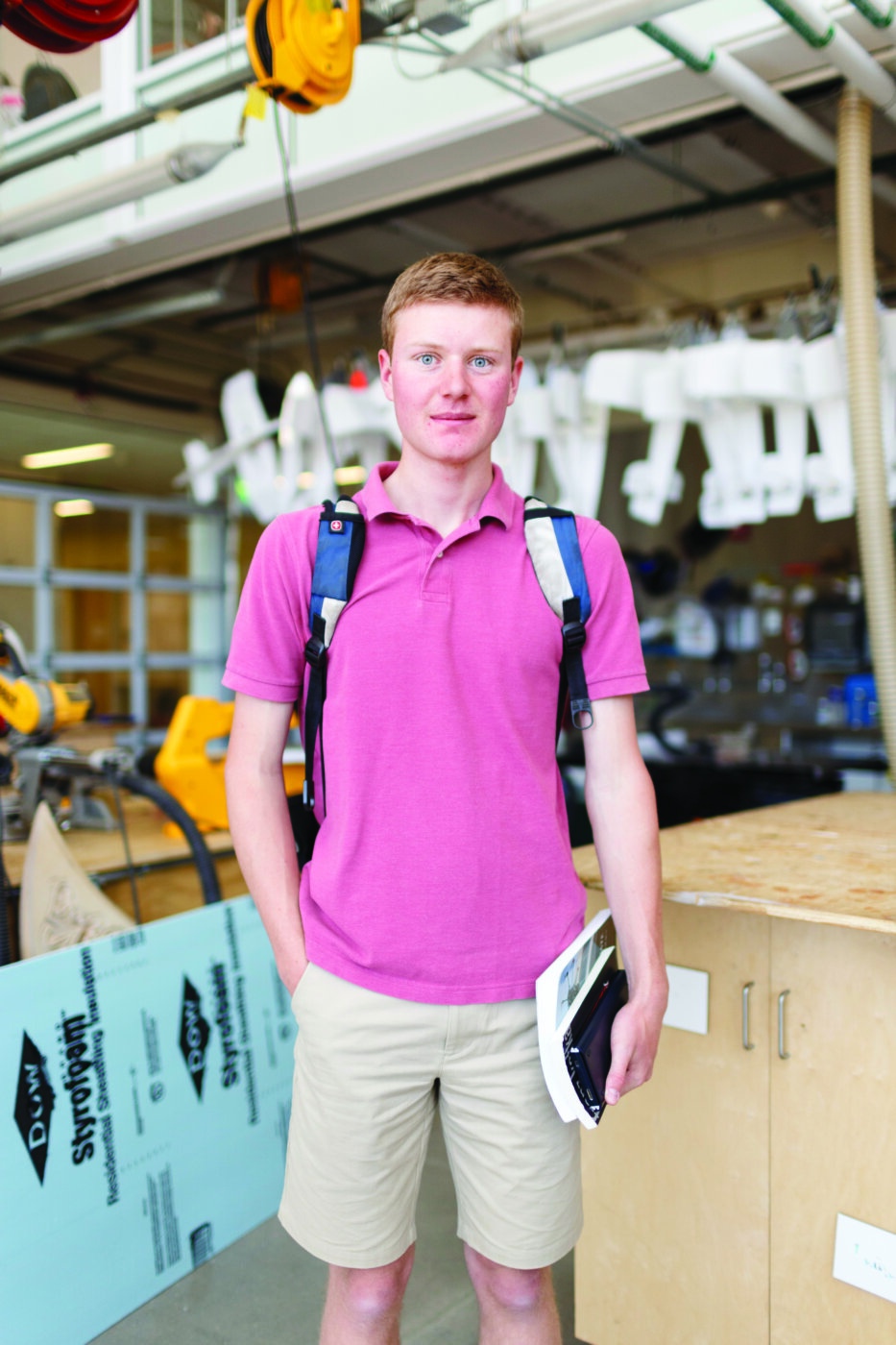
During his Junior year at CA, Nick Bain ’16 became intrigued with the idea of making education more effective. He was already recognized by peers and teachers as an inventor and auto-didact, with a seemingly insatiable appetite for intellectual exploration, tinkering, and questioning the status quo of science and technology. He had been among the first to take full advantage of CA’s Anderson Innovation Lab, built as part of the new Froelicher Upper School just a year earlier in 2013; there, he designed and laser-cut a clever write-on light switch cover dubbed the Switch Port, enabling him to earn startup backing through Kickstarter and eventually market the product locally.
It was no surprise to anyone that he was curious about ways that he could squeeze even more learning from his time spent on campus.
Bain was enrolled in then-Upper School history teacher Paul Kim’s Global Design and Social Innovation course, which embodied the call by Dr. Jon Vogels, who was the Upper School Principal at the time, for CA to prepare students for a world that was rapidly being shaped by emerging technologies. “We know that the future is being driven by creative genius, technological innovation, and the ability to navigate complex interactions,” Vogels said. “We must prepare our students for a future that we can only imagine.”
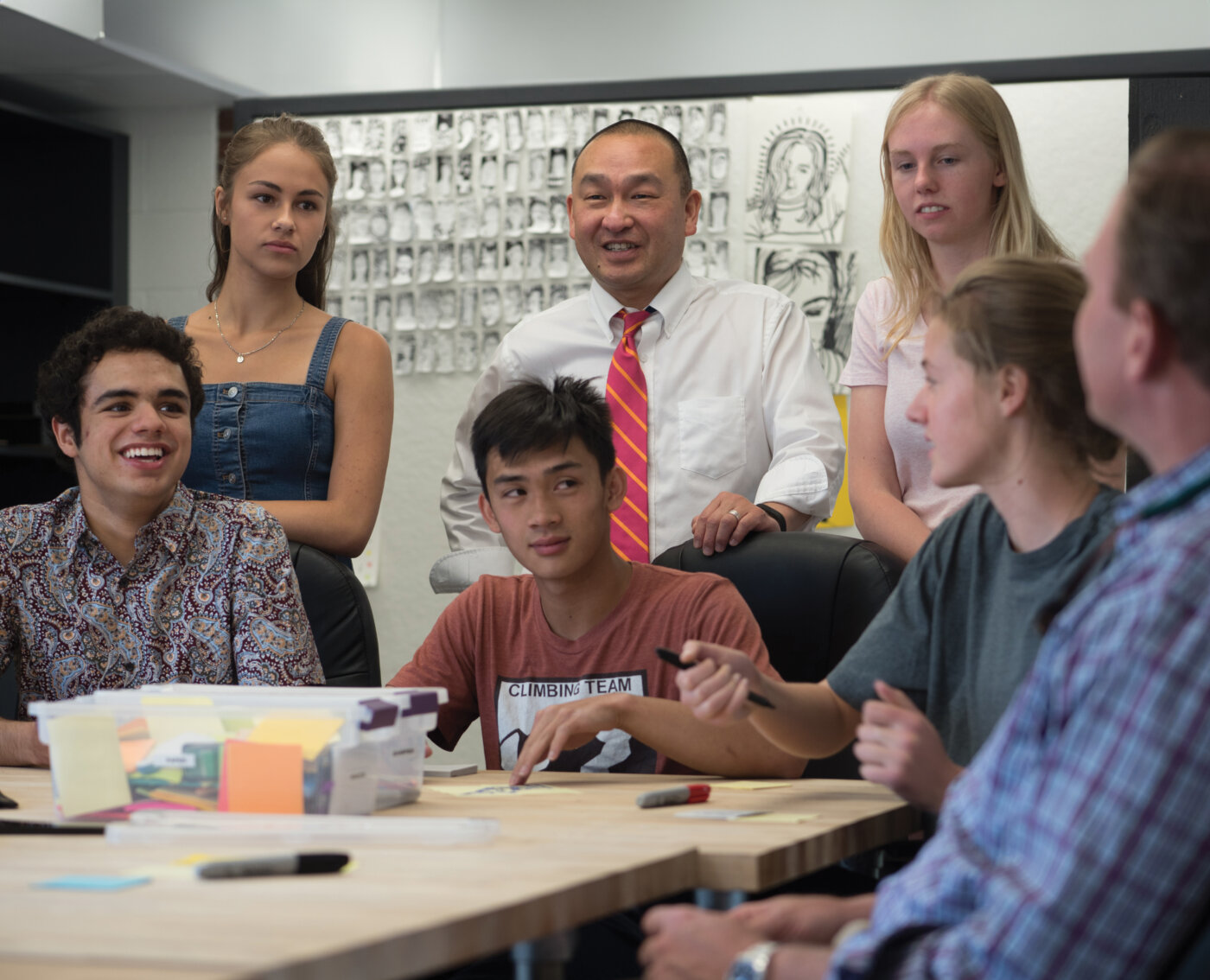
Inspired by discussions in the class about new educational models, Bain devised an experiment that he hoped would measure the effectiveness of his academic schedule. He kept track of his time in CA’s classrooms minute by minute, rating each quarter-hour chunk on whether or not he was actively learning. Very quickly, he realized that, according to his data, though he was doing something for all seven hours of the school day, direct instruction was actually happening less than half of that time.
“There’s sort of an assumption that to be educated, you have to go through this pretty specific process—which is why schools are set up the way they are,” Bain observes. “But maybe there’s a lot of variation in the way people learn best; they can follow their own path and still come out super-smart and motivated.”
Bain took his observations to Kim, and the two began a series of conversations to explore the concept of self-directed learning, in which students are empowered to assess and fulfill their own learning needs, with teachers serving more as coaches than as gatekeepers of information. It is a model that has earned increasing attention over the past two decades, as digital platforms such as Khan Academy and online high school and college programs have enabled people all over the world to obtain degrees, professional certifications, and marketable skills without ever entering a classroom.
With Kim’s support, and armed with his own research about the effectiveness of student-driven education, Bain successfully pitched the idea of a largely self-directed trimester to CA’s administration, and was soon pursuing his own studies, which included both the topics covered in his regular courses and areas of his own choosing. The only caveats imposed by the school were that Bain had to pass the courses he was enrolled in and, just as importantly, keep a journal about his experience.

Bain did both, all while carrying out his own research in aerospace engineering and designing a battery-powered ultralight—pursuits that would help earn him admission to MIT and, later, land him a consulting gig working on vertical-takeoff-and-landing aircraft prototypes. His success, and the detailed notes in his journal, were the “proof of concept” that Kim needed to push forward the ideas that led to the creation of what is now one of CA’s marquee offerings.
“There were a lot of things happening in education at that time,” recalls Kim. “In a world that was increasingly digital, students were beginning to notice a disconnect between their lives inside and outside of the classroom. When Mike Davis arrived at CA in 2008, he brought a new energy and appetite to start addressing that divide.”
“The thing I appreciate most about Colorado Academy is the growth mindset that so many of our teachers and administrators share,” Davis explains. “And when I came to CA, we really began to consider a more 21st century-based learning program that emphasized innovation.”
Kim turned to his colleague and fellow preceptor Thorpe for help in fleshing out the program that would become REDI Lab. Encouraged by Davis’s enthusiasm for new ideas, the two had been thinking about the future of teaching at CA. When, at a professional development retreat with the entire faculty the year after Bain’s successful prototype, Davis asked participants to share their ideas for a better CA, Kim and Thorpe suggested a self-directed learning trimester.
“We didn’t have a name for it at the time,” Thorpe acknowledges, “but Mike encouraged us to pursue it.” After building support for the idea among faculty and with the Board of Trustees, Kim and Thorpe launched REDI Lab with a first cohort of students during the 2017-2018 school year.
Recounts Davis, “I think we had reached a point where there was only so much further we could push the framework of a college preparatory environment. What’s so interesting about the REDI Lab idea is that it takes the kind of traditional mentor-student relationship, like you’d find in a graduate program, and allows us to harness that by letting students define and identify problems that they want to take on and solve.”
The process
During that inaugural voyage, Thorpe says, he and Kim refined their model of self-directed teaching and learning to emphasize a number of key themes.
First among these is Design Thinking, a human-centered approach to innovation and “unlearning” popularized at Stanford’s d.school. With empathy at its core, the Design Thinking process integrates the needs of people, the possibilities of technology, and the requirements for success in the world. Innovators, according to the Design Thinking philosophy, must abandon pre-conceived notions and biases to truly understand the scope of the problem they are trying to solve. Rapidly iterating from prototype to refined designs informed by user feedback, creators develop innovative and sometimes surprising solutions.
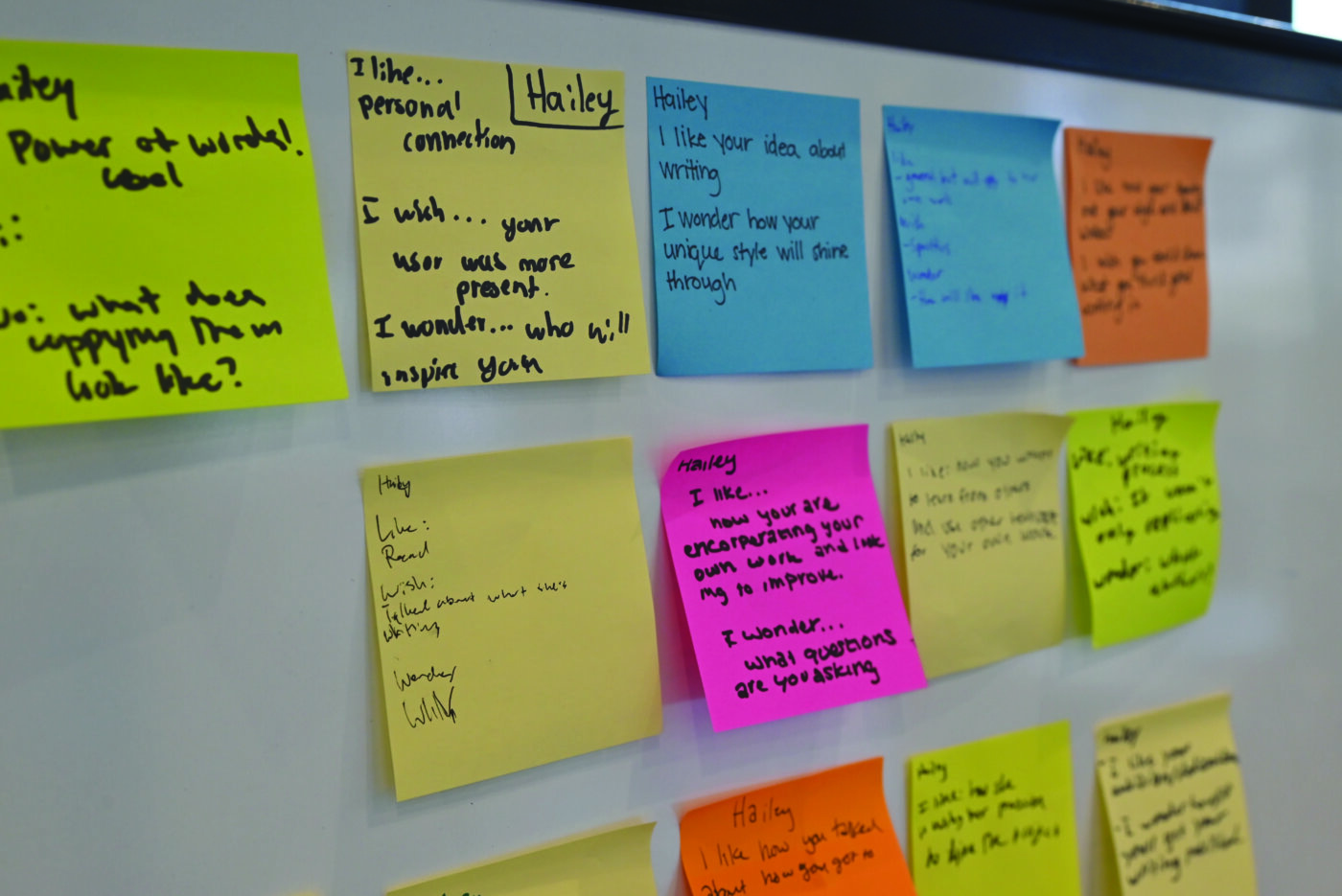
Upper School science preceptor and current REDI Lab instructor Martha Smith elaborates, “At CA, we have lots of students who are ‘good’ at school. But when they become engaged in Design Thinking, where you stop focusing on the end product and really start to ask what you can learn that someone isn’t teaching you, that just blossoms into something that they never expected. They get lost in the ‘messy middle.’ Those are the most powerful journeys for me to walk alongside.”
Second, the REDI Lab process challenges students to identify their values, their “why.” “You can’t be successful in developing the ‘what’ and the ‘how’ until you establish the ‘why,’” explains Thorpe. “Throughout the trimester we keep bringing students back to the central questions of ‘What do you value?’ and ‘Why do you value it?’” The answers to these guide all the work that follows.
Next, students learn the importance of asking questions to advance their thinking—not to get permission. “It’s so easy for young people to sit down with us and ask if they can do something,” Thorpe says. So, during regular mentoring sessions, students are encouraged to give themselves permission to take action and be creative. “We want them to practice their agency, to take risks, and for us to make something better together.”
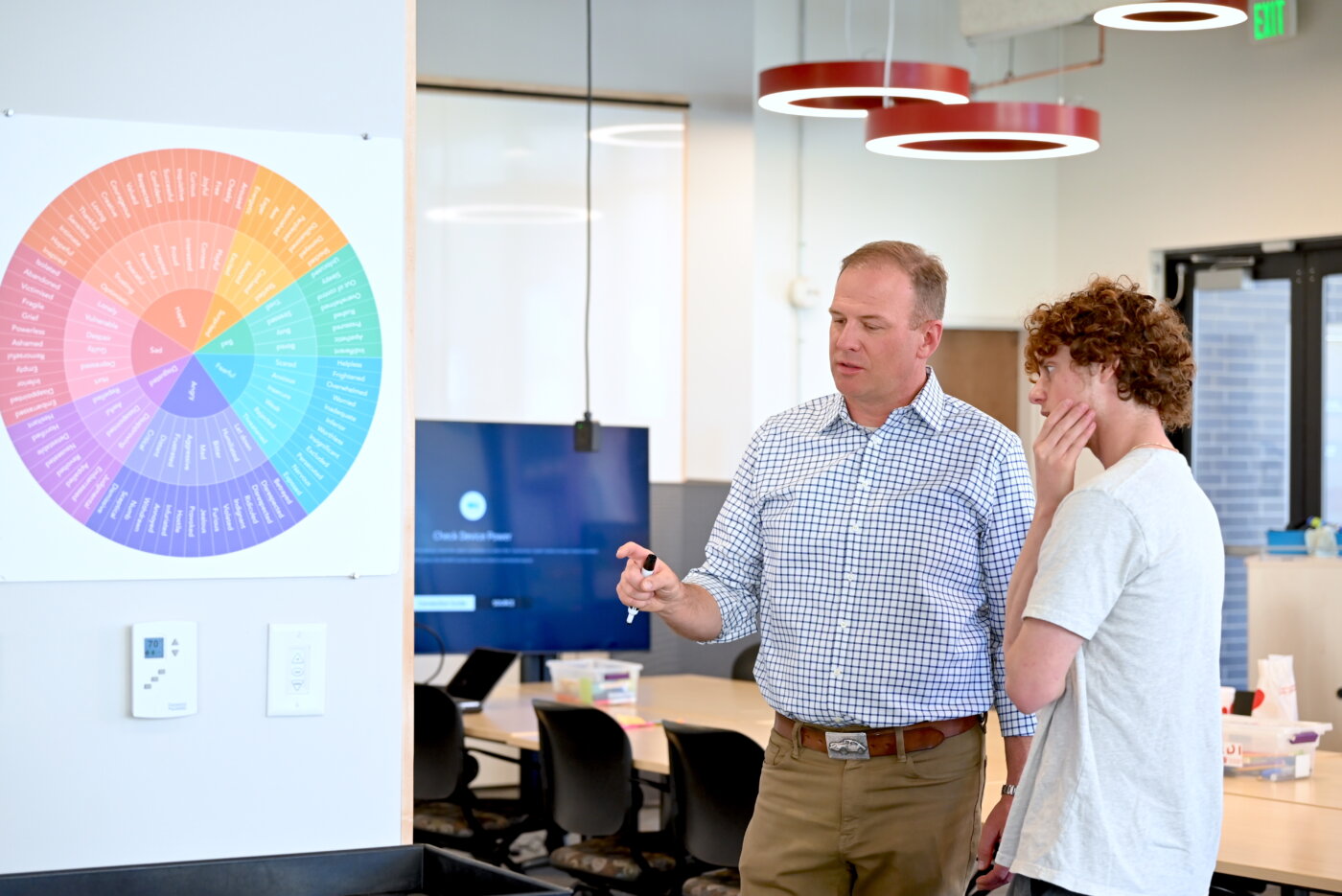
According to Smith, “Some students really want to be told what to do—that’s what school has been for them up to this point. But here, I am not the expert in the room; I can’t answer their questions about how to code the app they’re working on, or to build the engine that they want to build. Many hit some bumps in the road, and they don’t like it. Watching them fight through that is one of the things that I love the most about REDI Lab.”
Finally, there’s Thorpe’s mantra, perhaps the defining feature of the REDI Lab process: “Hold your ideas lightly.” “Letting your initial conceptions go when you hit a roadblock, or watching them change and expand in response to new information, is a skill,” Thorpe says. “Being prepared to pivot and to capitalize on the unexpected is vital in the world these kids are facing.”
As Kim explains, not everyone at CA was on board with the REDI Lab approach. “A few faculty members wondered, ‘How can kids learn without teachers?’ But the reality is that students live these rich inner lives that often are given little space in school. Kids can sit in a classroom day in and day out, and their teacher might never know what’s inside.” But once the CA faculty saw what the initial cohorts of students were able to achieve, and how they were able to grow as thinkers and creators, they were convinced of the model’s value.
Promising outcomes
One of REDI Lab’s early success stories was that of Ulisses Rico Moncada ’21, who came into the program determined to make a local impact around COVID-19. A first-generation high school student, Moncada had stood witness as family members became ill or died during the first year of the pandemic. He knew that his Spanish-speaking relatives were confused, fearful, and unsure of the benefits of vaccination, and he wanted to do something to help prevent further harm, particularly among young people.
Initially Moncada focused on a scientific approach, but through his REDI Lab research and discussions with peers and mentors like Thorpe, it became clear that some of the science remained elusive even to the top scientists working on the virus, and perhaps his efforts would be better spent elsewhere.
“How could you use your own unique perspective and abilities to make the kind of impact you envision?” Thorpe asked his student. A media production enthusiast, Moncada realized that he could answer a pressing need in his community—for more targeted communication about preventing the spread of COVID-19—through video.
Professional networking and mentoring are key to the REDI Lab process. Throughout their work, students are encouraged to reach out to researchers, businesses, grant-making organizations, and other potential allies to gauge interest in their ideas and garner advice and support. Moncada used his own networking efforts to pitch an idea for a video public service announcement, and when he eventually made a connection at Comcast Colorado, the company not only loved the idea, but also let him write the script, shoot the video, and even hire the actors, who were mostly his friends from CA. The spot was broadcast in summer 2021.
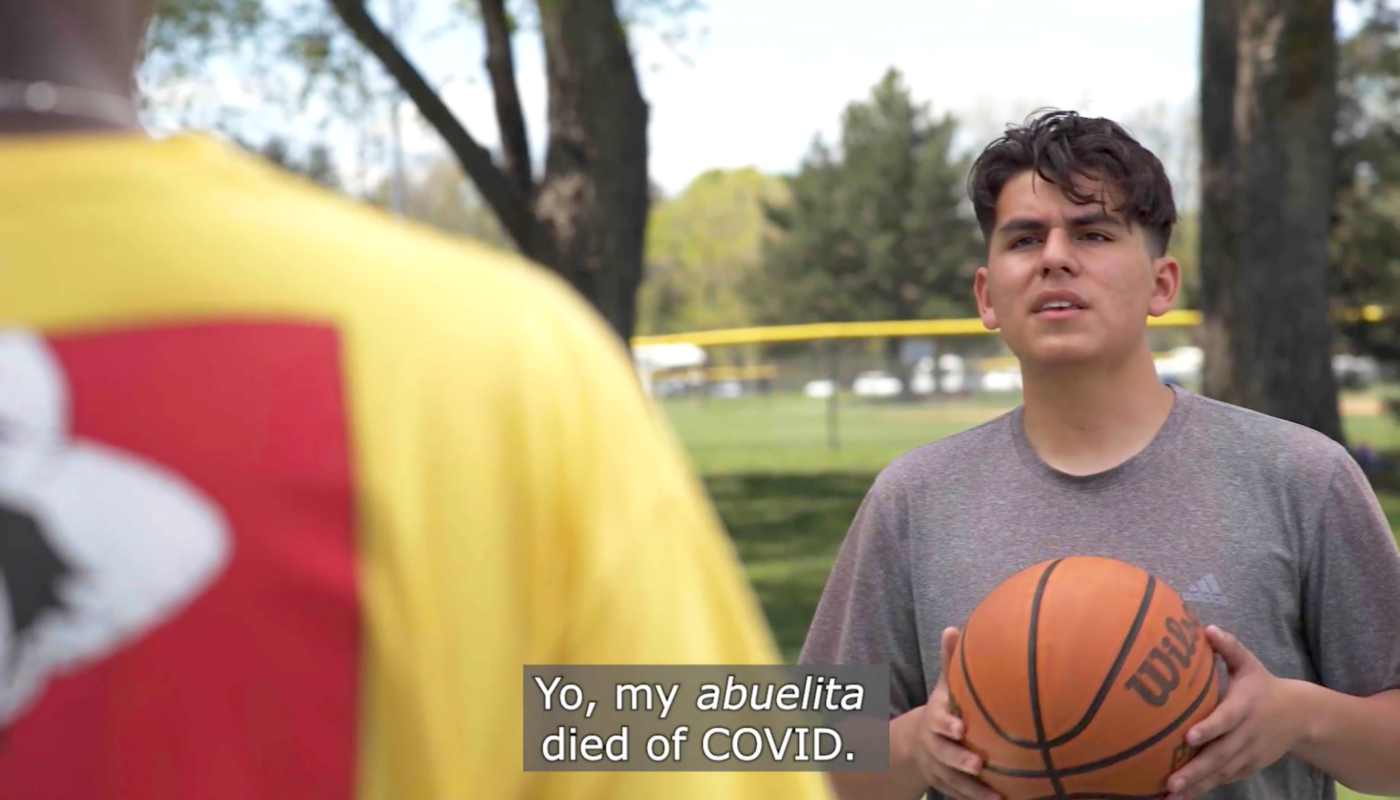
“I think that REDI Lab gave Ulisses the time and the space to understand what he was uniquely qualified to do. And he did it,” says Thorpe.
Over the years, many students have followed a path similar to Moncada’s, discovering through the REDI Lab process how they might dig into their passions and talents to make a real difference in the world. There’s the one who came up with the idea of “an Uber for private planes,” and another who drew up plans for the “CA Natatorium.” One student created a conscious-living “manifesto,” one researched a project on Colorado’s Black history, and one proposed an inclusive e-sports training camp.
This year, Senior Jo Rydberg was interested in innovation in education (a not-uncommon theme for REDI Lab participants). She began by looking at Colorado’s state educational standards through the lens of equity, but quickly zeroed in on an issue with which she had first-hand experience, and where she could potentially make an immediate impact.

“My big question became, who needs schools to change more: students or teachers? And my answer really was both. How can we provide more support for both teachers and students to make schools a less stressful environment so that everyone can succeed together?”
Rydberg used her time in REDI Lab to interview students and teachers from both CA and other schools, and was able to begin writing job descriptions for roles such as a “Dean of Fun.”
“In a classroom setting, it can be harder for me to open up with my words about what I’m thinking about,” Rydberg says. “REDI Lab really pushed me out of my comfort zone to have those creative conversations about my project.” She plans to continue studying elementary education and child development at Vanderbilt University.
For fellow Senior Owen Tilman, REDI Lab was an opportunity to explore interests in politics, law, and the point where the two fields intersect. His focus was the Supreme Court’s 2022 decision in the Dobbs v. Jackson case, which overturned the landmark Roe v. Wade precedent, and how it did or did not reflect growing politicization of the law.
While Tilman, through his REDI Lab research, found confirmation of his view that the Dobbs decision was influenced by politics, he was surprised to also discover that his support for the original Roe v. Wade precedent took on a whole new meaning.
“In one important part of this argument—that Roe v. Wade itself is good, in a vacuum, as case law—I’ve come around to the opposite perspective: that it’s terrible case law,” Tilman explains. “That doesn’t mean that it should have been overturned; it doesn’t mean that it’s an outlier in terms of cases that the Supreme Court has adjudicated and decided in the past. But it has simply built a much more nuanced understanding of the issue for me in a way that I did not expect.”

Tilman will study philosophy and political science at Yale University, and indeed, he argues that REDI Lab has played a large part in his understanding himself as a learner and determining where he will go from here.
“Sometimes there’s an assumption that REDI Lab is very unstructured,” he says. “But on the contrary, I feel it’s given me better ways to engage with complex material and to carve out a unique pathway to explore these interests. It’s also important to remember that learning in REDI Lab takes place in a community—your teachers and fellow students are there with different interests and ideas, and they will challenge your biases and preconceived notions about whatever you’re pursuing. It may not be a linear or clear-cut path, but there’s immense value in that.”
Seeing beyond campus
It didn’t take long for CA families to begin hearing of students’ successful experiences in REDI Lab. Among these were Aimee and Jonathan Coleman, whose daughter, Emerson-Ellis, participated during her Junior year.
“When we first met Mike Davis when we came to CA,” Jonathan recalls, “his energy and enthusiasm for innovative learning was just contagious; it really lit a fire for us. We hadn’t even heard of REDI Lab at that point, but once our daughter joined and we saw how collaborative, innovative, and special the program was, we knew we wanted to be more involved in that vision.”
They began by endowing the Aimee and Jonathan Coleman Innovative Teaching and Learning Fund, which would attract other donors to lend support each year to the REDI Lab program. Next, in 2021, they helped launch the REDI Lab Summer Academy, a two-week entrepreneurial camp and idea incubator for high school students in the Denver area.
Along with Davis and Thorpe, the Colemans had always seen REDI Lab as a way to extend CA’s reach and impact beyond its suburban campus. “Expanding the ‘aperture of opportunity’ for lots of students to have exposure to the types of programming and education that we are fortunate enough to enjoy at CA—this has always been part of the vision,” says Jonathan.
Adds Aimee, “Part of CA’s mission is cultivating kindness and giving back to the community, and having a presence downtown, where we can engage with Denver more broadly, would allow CA to follow its mission in a deeper, better way.”
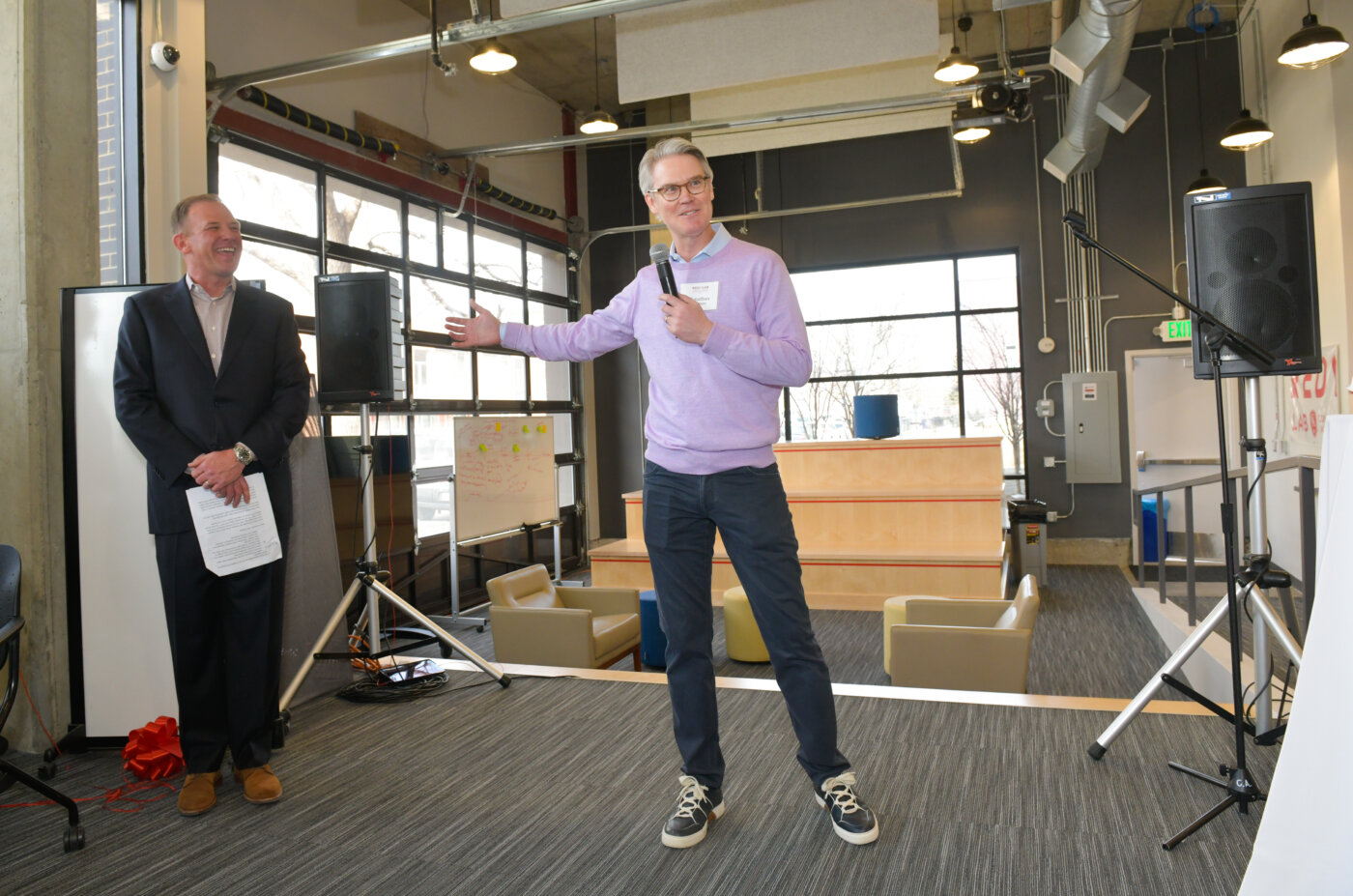
When CA parent Brady Welsh, the President of Sherpa Commercial Real Estate, and another Denver real estate expert, Thorpe’s longtime friend Hayden Hirschfeld, called attention to a vacant ground-level space in DHA’s Mariposa development, Thorpe and Davis both thought it could be a good fit.
“We had been looking around the Denver area for locations with access to public transportation that weren’t already served by independent schools,” Thorpe recounts, ”and Mariposa fit the bill to a T.”
DHA saw CA as an equally good fit. A quasi-municipal corporation with a portfolio of over 13,000 units and housing choice vouchers, DHA provides affordable housing to more than 26,000 low- and middle-income individuals, representing over 12,000 families. It is transforming public housing in Denver by creating vibrant, revitalized, sustainable, transit-oriented, and mixed-income neighborhoods. Central to its strategy is partnering with businesses, nonprofits, and community and youth organizations to ensure healthy development and growth.
CA’s REDI Lab had a lot to offer, according to Thorpe. Not only did it come with a reputation and resources that would burnish and support DHA’s efforts, but it also could offer programming—summer opportunities and teacher professional development, with plans for even more to come—that would activate a neighborhood space and generate real local pride.
CA and DHA signed a letter of intent in November 2021, and very quickly, work began to finish the vacant Mariposa space. Another CA parent, Martin Goldstein, the co-founder and Principal Architect at Venture Architecture, arranged for his firm’s donated design services, and through the summer and fall of 2022 the Coleman Center took shape.

“Oftentimes, if you’re investing in something that’s really innovative, it comes with a lot of risk,” says Jonathan Coleman. “But one of the things that was really compelling to us in supporting REDI Lab was that the innovation piece had already been ‘de- risked’ by Tom and the team of faculty that is focused on this work. It was already operating at a high level, with lots of graduates of the program, and the new space was an opportunity to give that a boost.”
Aimee Coleman observes, “One of the exciting things about the new space is that it takes CA students maybe a little bit out of their comfort zone, away from the traditional campus that they’ve been on, and exposes them to a brand new area where they can think in a different manner, explore creative ideas in this amazing environment that we’ve been able to create.”
That distance from CA, both literal and figurative, is one of the biggest benefits built into the Coleman Center. As Tilman explains, “As much as I love CA, there definitely is that element of the ‘CA bubble’; there’s always some attachment which precludes your experiencing parts of the world outside. REDI Lab balances that with immersion in a very new Denver community that most of us had never really been to before. It forced me to reconsider the ways that CA has shaped my opinions and to look at the issues I’m passionate about through an entirely different lens.”
Thorpe agrees. “I think we’ve seen kids take their ideas more seriously because of the commitment that they have to have to leaving campus and coming here. They notice that there’s a little bit of a different pace here, and that they can step into the space and let their ideas live and breathe and grow. We’ve seen it happen—an acceleration of their thinking and dreaming.”
The power of connection
Out in eastern Colorado, where Bain is testing and refining his vertical-takeoff-and-landing prototypes, the REDI Lab’s prototypical student enjoys reflecting on the type of self-directed learning he first explored at CA. “With the aircraft designs that I’m working on currently, it’s interesting to notice that I’m not trying to learn any specific skills exactly; I’m just trying to get a certain thing done. But as a result of that I feel I’m learning all these other things that I just have to know to make stuff work. And it feels effortless.”
He goes on, “I remember Dr. Davis once said something to the effect of, ‘There’s a difference between education being rigorous and it being stressful.’ I always thought there had to be a way you could treat your education less as a slog and more as something you really want to do.”
Still, with most of his project time spent working solo, Bain also acknowledges the value of collaborating with others.
“If there is one thing I think I missed at CA, it was being with people more often,” he says. “Some of my clearest memories are of Town Hall meetings; I remember coming out of those with my friends and thinking, ‘People here are just so good to each other.’”
When, in college during the pandemic, he and his peers were asking themselves, “What’s the value of attending school in person, anyway?” Bain heard the answer in his mind: to be around and to learn from people who are doing really cool stuff.
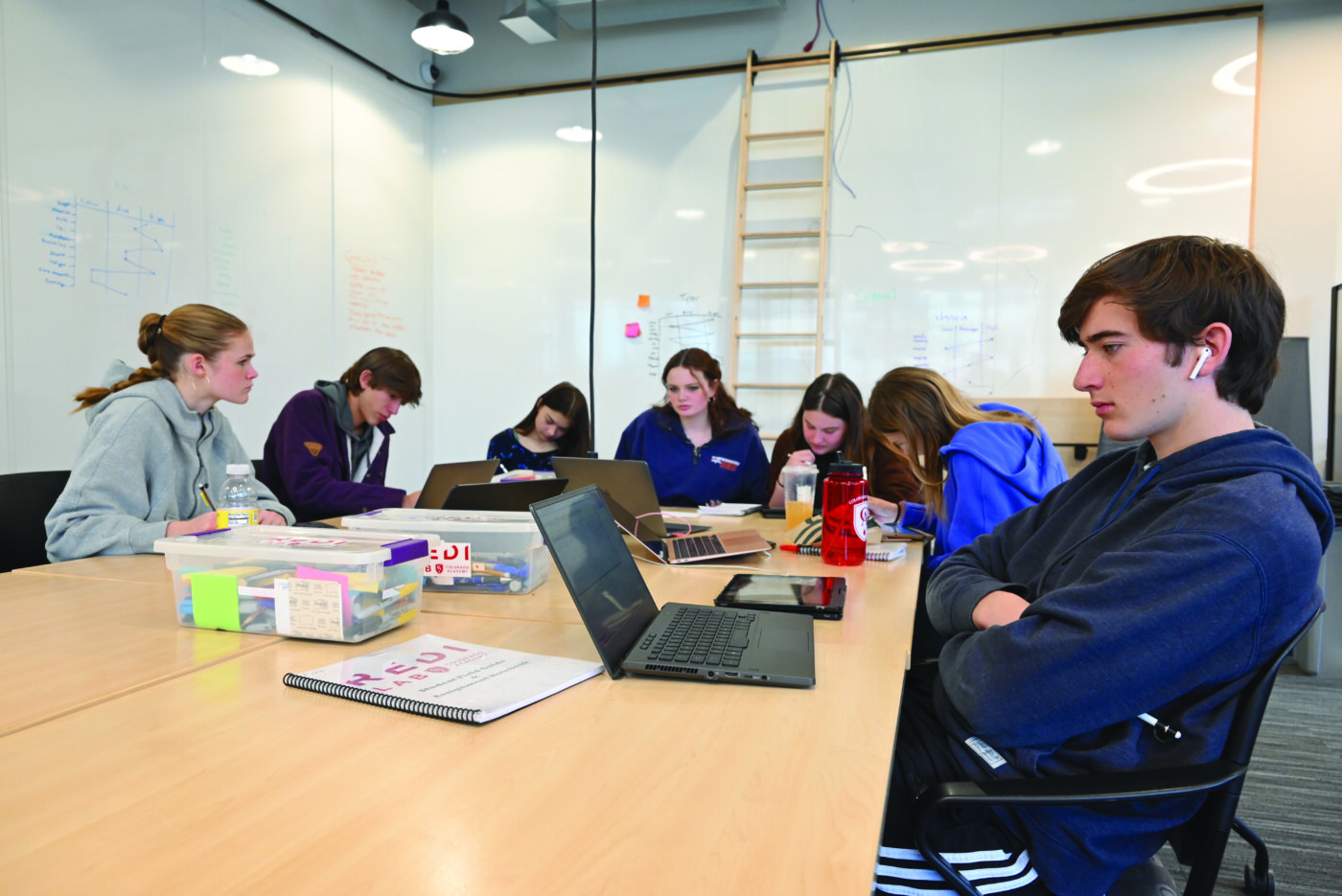
And in many ways, that’s the lesson of REDI Lab itself. Though “self-directed learning” is the catchphrase that is so often associated with this innovative program, the deliberate feedback loops that circle throughout each REDI Lab trimester—students sharing their ideas with each other, vetting them with mentors and experts, and revising and refining them through user-tested prototypes—expose just how deeply rooted community and connection are in the process.
“Today kids are growing up in a world where they may not be able to envision what happens in the long run for them,” says Thorpe. “I grew up in a generation where I was pretty certain I was going to get married and have children, but I don’t think kids feel that same certainty now. In REDI Lab, we allow our students to express that uncertainty, and in working together to create solutions, they feel less alone—they don’t have to take on whatever the world is throwing at them all by themselves.”
Thorpe continues, “I take this work so seriously, and I take the students so seriously, that I often don’t talk about how much fun it is to get to know people and see people in ways that you never have before. There’s an enormous amount of joy that comes with this work.”
That grounding in human beings and the hope found in the exchange of ideas comes to the fore during each trimester’s final presentations, when students take the stage to present TED Talk-like pitch decks to explain their work. The confident, carefully rehearsed presentations in front of classmates, parents, and other guests are the culmination of weeks of rehearsals with teachers and peers.
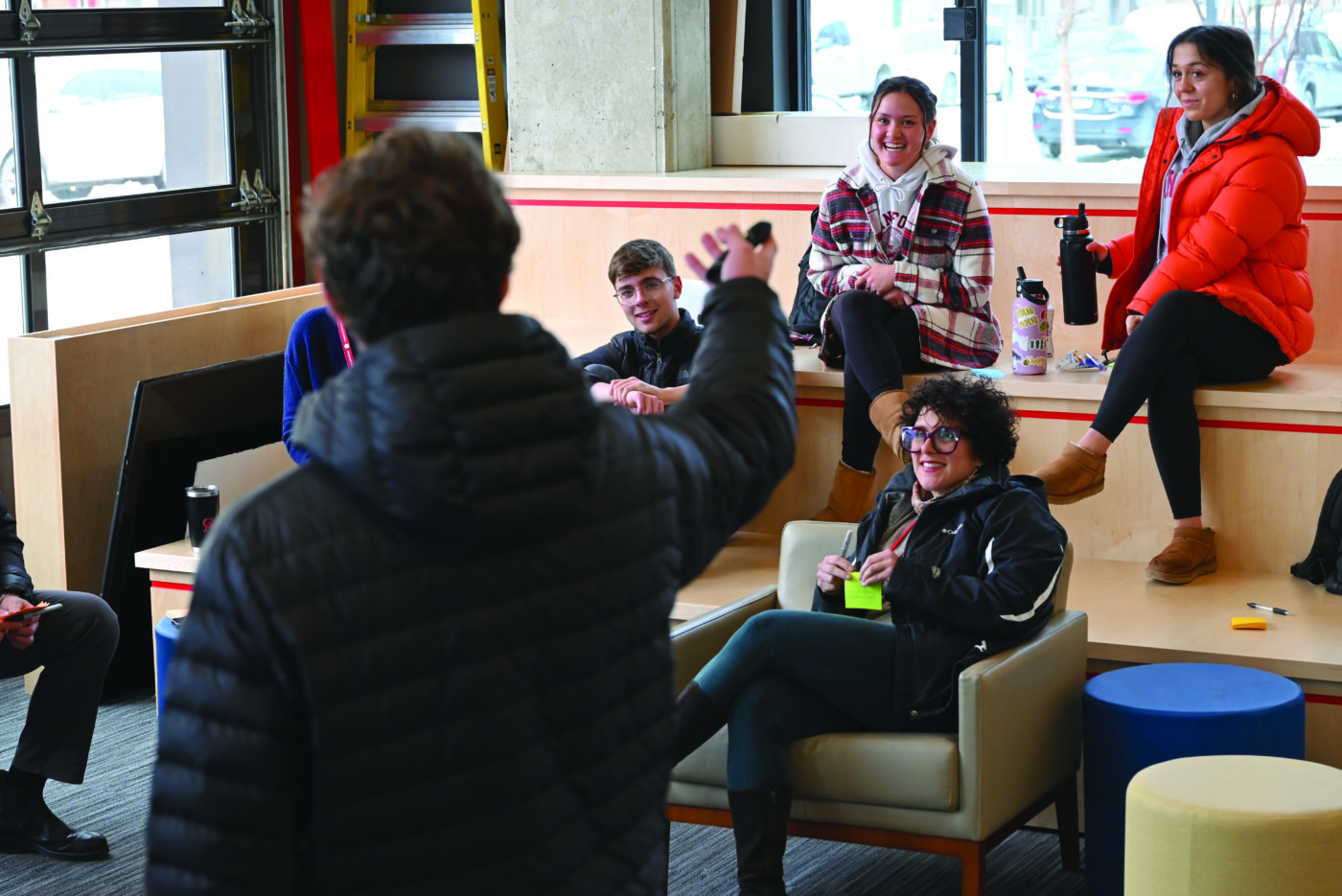
This part of the REDI Lab process, in which students can now make use of the dedicated, theater-like “arena” in the Coleman Center, embodies the critical final pillar of the program’s mission: building value by offering students a platform for sharing their ideas.
As Paul Kim puts it, “It’s so hard for students to understand sometimes, but the message is very simple: You have something important inside you, and we want to help you share it with the world. Most of us struggle with that notion all our lives. But to position young people to have a dedicated amount of time where that’s what they’re focused on—that’s powerful. That’s liberating.”
Kim, who now works on innovative school models with a consultancy called Transcend Education, believes that the REDI Lab process “stands up against some of the best programs in the country.” Think of High Tech High, an independent public charter school in San Diego whose vaunted project-based learning approach was the subject of a 2018 documentary, Most Likely to Succeed.
“The soul of a school shows up” in a program like REDI Lab, Kim argues, and it’s hard to disagree. As Thorpe emphasizes, the best classrooms are “entrepreneurial endeavors,” in which all stakeholders work together to co-create knowledge. And in the Coleman Center, the CA community has quite literally joined together to realize a vision of what education should look like.
“Whether it was folks donating financially, whether it was giving us their time, skills, or expertise,” Thorpe explains, “Board members, Operations Team members, parents, REDI Lab alumni, and our earliest supporters, like Jon Vogels, Paul Kim, Mike Davis, and so many others—it truly took all of us.”
“When they graduate from high school and college, this generation of students will confront immense challenges,” observes Davis. “When I see what’s happening in the REDI Lab Coleman Center—with students thinking so ambitiously and engaging so directly in the real world around them—it truly inspires me as an educator.”
Jonathan Coleman adds, “CA has multiple responsibilities. Certainly a primary one is to its students; but there’s also our responsibility to our community, and making the world a better place. We don’t want to sound too grandiose here—we’re not trying to change the world. But in a real sense, this is a step for CA to expand its influence in Denver in a way that we hope is meaningful.”
